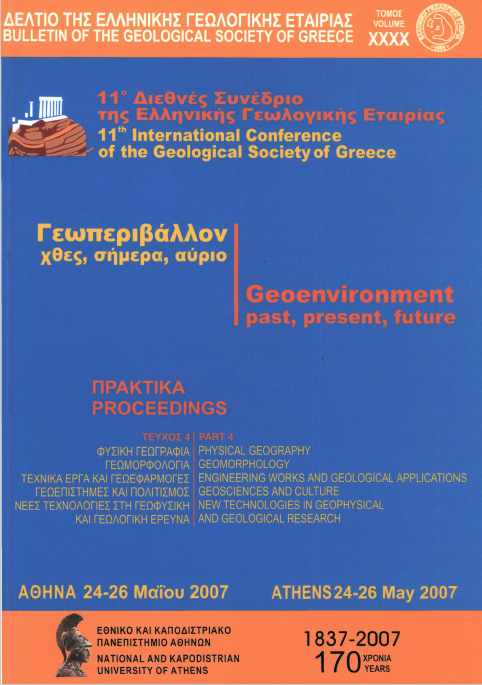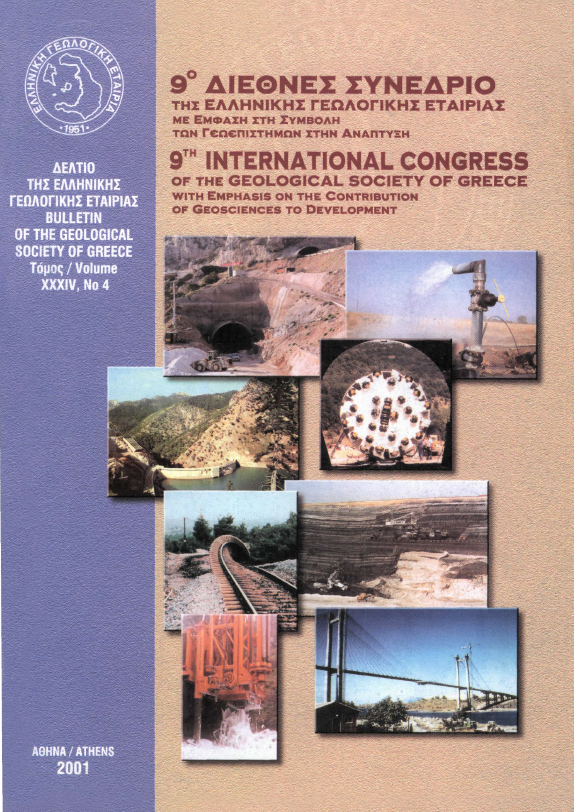A contribution to environmental research of the Korissia coastal wetland (Corfu isl., Greece), with the application of combined geological and geophysical methods supported by Geographic Information Systems

Abstract
In the current paper are presented the results of a multidisciplinary study (stratigraphical, sedimentological, geophysical and geochemical) combined with modern techniques (G.I.S. and remote sensing). This study aims at integrating the natural and anthropogenic factors affecting the Korissia lagoon. It is a shallow coastal lagoon, communicating with the sea via an artificial channel. The area around the lagoon consists of alluvial sediments hosting, in places, newly formed and/or "old" (pre - Holocene) sand-dunes. The broader area constitutes a postalpine sedimentary basin characterised by smooth morphological relief. The lower stratigraphie unit of the post-alpine sequence is a Pleistocene marly formation, which was detected as the basement (5-15 Ohm.m) by the geophysical survey. The resistivity-based basement map implies the existence of a "palaeo-gulf" trending EW. These marls constitute the impermeable basement of a shallow aquifer hosted in the area. The salinity of the lagoon is very high during summer (>40psu) but it does not affect significantly the wells around it. The lagoon is well oxygenated, while the wells have lower D.O. values. Ammonia and nitrates are the main inorganic Nitrogen forms, in the lagoon and the wells, respectively. Phosphorus is the limiting factor for phytoplankton growth. Human activities affect the area that is in need of an environmental management plan in order to prevent ecological degradation
Article Details
- How to Cite
-
Alexopoulos, J. D., Tomara, V., Vassilakis, E., Papadopoulos, T. D., Dassenakis, M., Poulos, S., Voulgaris, N., Dilalos, S., Ghionis, G., Goumas, G., & Pirlis, E. (2007). A contribution to environmental research of the Korissia coastal wetland (Corfu isl., Greece), with the application of combined geological and geophysical methods supported by Geographic Information Systems. Bulletin of the Geological Society of Greece, 40(4), 1892–1903. https://doi.org/10.12681/bgsg.17187
- Section
- New Technologies in Geophysical and Geological Research

This work is licensed under a Creative Commons Attribution-NonCommercial 4.0 International License.
Authors who publish with this journal agree to the following terms:
Authors retain copyright and grant the journal right of first publication with the work simultaneously licensed under a Creative Commons Attribution Non-Commercial License that allows others to share the work with an acknowledgement of the work's authorship and initial publication in this journal.
Authors are able to enter into separate, additional contractual arrangements for the non-exclusive distribution of the journal's published version of the work (e.g. post it to an institutional repository or publish it in a book), with an acknowledgement of its initial publication in this journal. Authors are permitted and encouraged to post their work online (preferably in institutional repositories or on their website) prior to and during the submission process, as it can lead to productive exchanges, as well as earlier and greater citation of published work.








